SELECT AN ANT SPECIES TO LEARN WHICH PRODUCT IS BEST
RED IMPORTED FIRE ANT
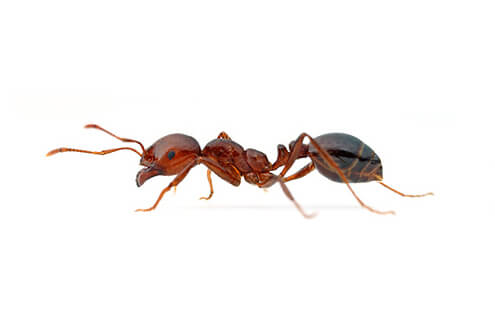

Scientific Name:
Solenopsis invicta
Actual Size:

1/8 to 1/4 inch
Location: Southern United States
Feeding Habits: Fire ants are omnivorous, preferring greasy and sweet materials from vegetable or animal sources, including seeds, other insects, small birds and rodents.
Habitat: RIFAs typically nest in the ground; nests may have visible mounds up to 24" in diameter and about 7" high. They prefer warm, sunny areas such as dry fields, avoiding shady wooded areas. Colonies can contain several hundred thousand ants, and at least one queen.
Impact: Very active and aggressive, RIFAs will sting any intruder repeatedly, injecting venom that is usually painful and sometimes fatal.
ARGENTINE ANT
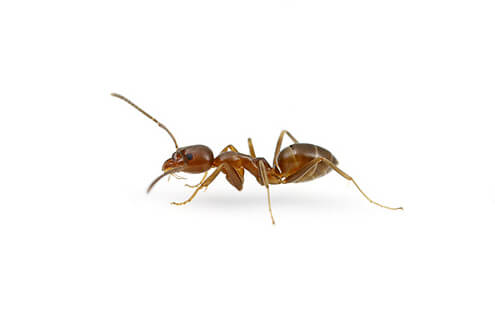

Scientific Name:
Linepithema humile
Actual Size:

1/16 to 1/4 inch
Location: Southeastern United States, California, Illinois, Maryland, Missouri, Oregon and Washington
Feeding Habits: Argentine ants prefer sweets but will also eat meats, eggs, oils and fats. Queens of this species also assist with foraging for food.
Habitat: Argentine ants locate their colonies in wet environments near a food source. These colonies can grow quite large, sometimes covering entire habitats, such as an entire garden or back yard.
Impact: Because they do not sting or bite humans, Argentine ants do not pose a direct health threat, but they can contaminate food and their giant colonies can cause property damage.
BIG-HEADED ANT
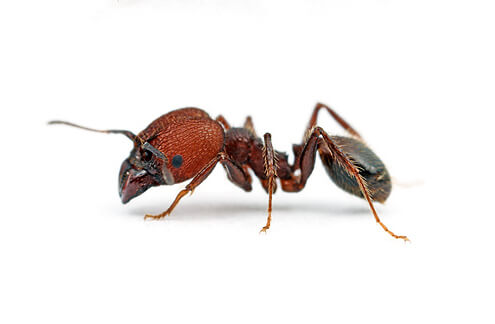

Scientific Name:
Pheidole megacephala
Actual Size:

1/16-1/8 inch
Location: Most commonly found in Hawaii and Florida and other U.S. gulf coast states
Feeding Habits: Big-headed ants prefer sweets and may forage in kitchens; also tend aphids in return for their honeydew.
Habitat: These ants primarily build nests in open, well-shaded areas, and occasionally in soil under shrubs and landscaping beds. Their small colonies produce crater-shaped mounds.
Impact: This aggressive invasive species is known to displace insect native species; it can also directly impact agricultural crops through seed collection and the harboring of other insects that reduce crop productivity.
PAVEMENT ANT
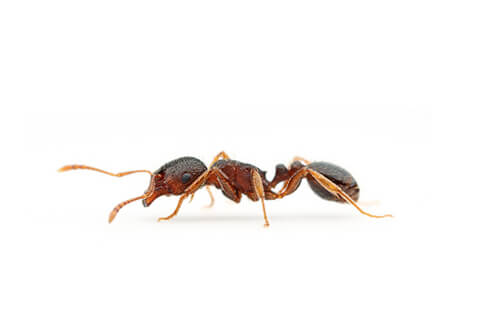

Scientific Name:
Tetramorium caespitum
Actual Size:

1/8 inch
Location: Throughout the United States
Feeding habits: These ants will eat almost anything, including insects, grease, seeds, honeydew, honey, bread, meats, nuts and cheese.
Habitat: Outdoors, pavement ants nest in soil next to and beneath slabs, sidewalks, patios, and driveways. Indoors, they nest under a building’s foundation and within hollow foundation walls.
Impact: Pavement ants do not pose a health threat, but they can contaminate food with their waste.
LITTLE FIRE ANT
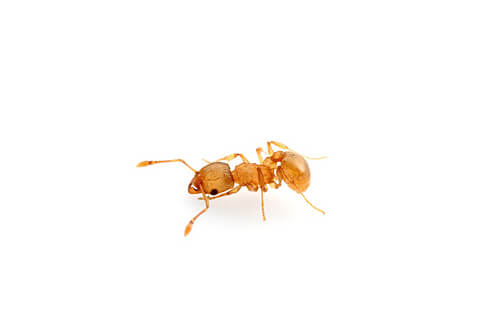

Scientific Name:
Wasmannia auropunctata
Actual Size:

1/16 inch
Location: Hawaiian Islands
Feeding Habits: Little fire ants are known to consume grains, seeds, arthropods, decaying matter and vegetation, as well as honeydew and fats, when available.
Habitat: This species tends to invade disturbed habitats, such as forest edges or agricultural fields, and their nests are often found behind palm sheaths. Indoors they may infest beds, furniture and food.
Impact: These ants deliver a painful sting when disturbed; known to infest agricultural fields and farms, where they damage crops and sting workers; also responsible for reducing species diversity, and eliminating arachnid populations.
HARVESTER ANT
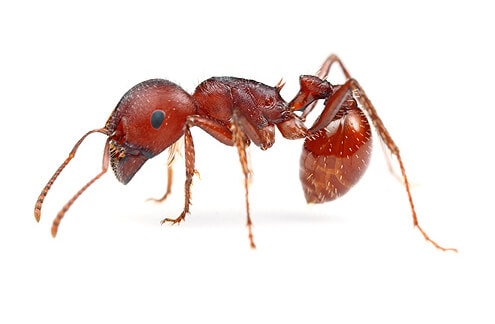

Scientific Name:
Pogonomyrmex spp
Actual Size:

1/8 to 1/4 inch
Location: Southern United States
Feeding Habits: Harvester ants actually represent hundreds of different ant species that collect seeds to make their food. These ants grind the seeds into a “bread” with their mandibles, storing it in their nest as a year-round food source. They also eat other insects.
Habitat: These species typically build deep, underground nests, preferring open, dry, desert-like conditions.
Impact: These ants are not very aggressive, but they have a strong bite and a sharp sting, similar to that of bees.
TEXAS LEAF CUTTER ANT
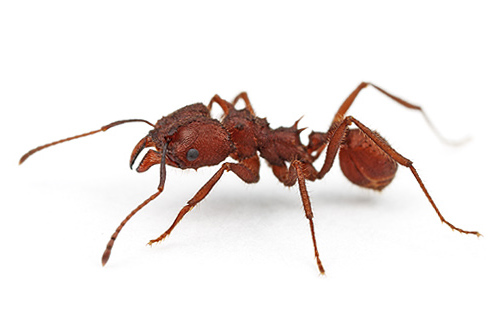

Scientific Name:
Atta texana
Actual Size:

1/6 - 1/2 inch
Location: Texas and Louisiana
Feeding Habits: Texas Leaf Cutter Ants cut down leaves and other parts of plants around them. This can include weeds, grass, trees, bushes, fruit and nut plants, and cereal crops. The ants take the leaves they cut down back to their nests where they use the leaves to grow a fungus that they feed off of.
Habitat: Colonies can be up to 50-80 feet across, containing as many as 2 million ants living underground. They develop in roadsides, open fields and forestland. The ants make mounds shaped like craters above ground that are 5-14 inches high and 1-1.5 feet in diameter.
Impact: The Texas Leaf Cutter Ant causes up to $5 million in estimated annual agricultural damage to forested areas, commercial nurseries, and landscaped areas in the United States. During the winter when foliage is scarce, Texas Leaf Cutter Ants attack pine saplings, causing damage to nearly 12,000 acres a year.